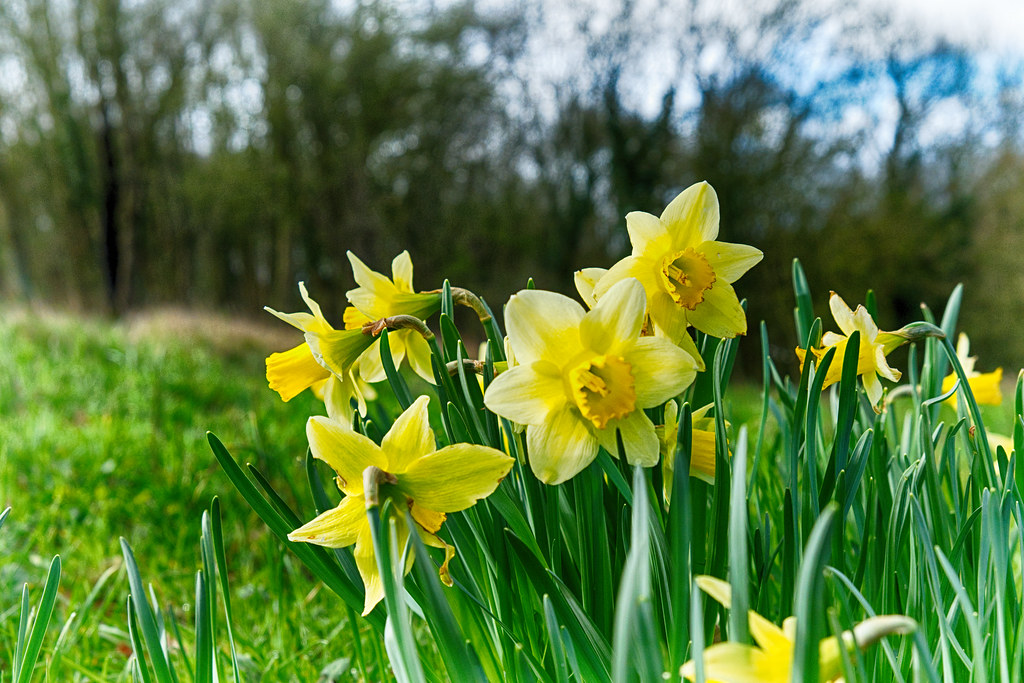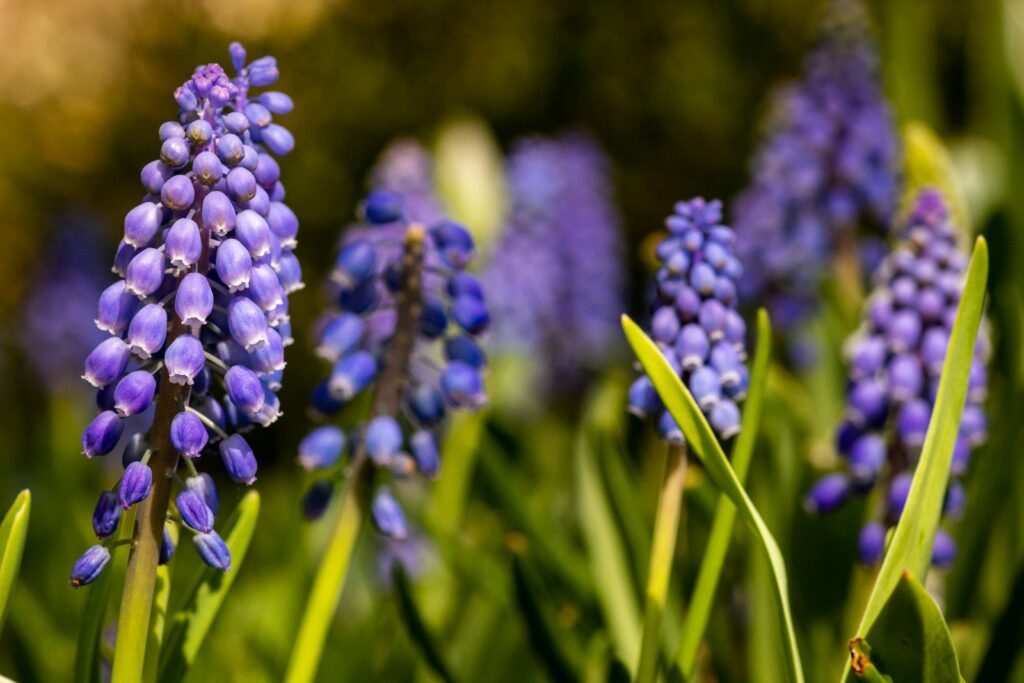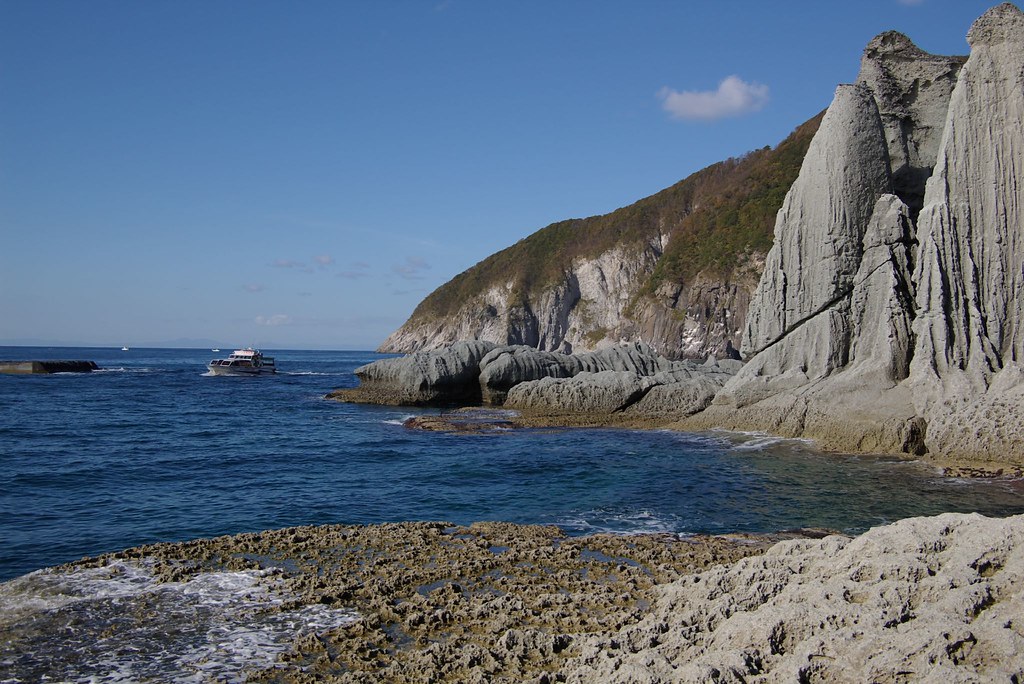There’s something profoundly bittersweet about witnessing the transformation of a beloved natural space into a new development. It’s a narrative that’s become all too common, as the relentless march of progress tramples through the green tapestries that many of us hold dear. For those who grew up with the rustling leaves and the chirping birds as their childhood soundtrack, the loss of these wooded areas is akin to losing a piece of themselves.
A Sanctuary Lost
Take, for example, the small wooded area that once thrived behind my house. It was more than just a cluster of trees; it was a sanctuary, a place where memories were made and where nature’s simple beauty could be appreciated. But now, the relentless hum of machinery signals the end of an era, as developers clear the land to make way for new homes. Amidst the fallen trees and disturbed earth, a single patch of daffodils stands defiantly – a vibrant yellow beacon of hope and resilience.
The decision to leave these daffodils untouched is a small consolation, a nod to the beauty that once was. But with the threat of being paved over looming, the question arises: how can we preserve this last vestige of the past? How do we safely relocate these daffodils so that they can continue to bloom year after year, serving as a living memento of the woods that once stood?
The Delicate Art of Relocation
The answer lies in understanding the delicate balance between development and preservation. It’s about recognizing the value of what we stand to lose and taking action to protect it. In this case, it’s about saving the daffodils – not just for their aesthetic appeal, but for what they represent: a connection to a time and place that will soon exist only in memory.
Timing and Tools
The process of relocating daffodils is delicate, but with the right approach, it can be done successfully, ensuring these flowers continue to bloom as a symbol of resilience and remembrance. The first step is to wait until the blooming period is over. Daffodils are best transplanted after they have finished flowering and the foliage has begun to yellow. This typically occurs in late spring or early summer, depending on your climate.
Once the right time arrives, prepare for the move by gathering the necessary tools: a spade or garden fork, a trowel, and a container or burlap to transport the bulbs. Approach the daffodil clump and gently dig around the perimeter, taking care not to damage the bulbs. Lift the clump from the ground and shake off any excess soil, then separate the bulbs carefully.
Finding a New Home
It’s important to find a suitable new location for the daffodils, one that mimics the conditions of their original home as closely as possible. Daffodils thrive in well-drained soil with plenty of sunlight. When selecting the new site, consider the soil quality and the amount of daily sunlight the area receives. Amend the soil with compost if necessary to improve its structure and fertility.
Planting and Care
Planting the bulbs at the correct depth is crucial for their survival. Daffodils should be planted at a depth three times the height of the bulb. Space the bulbs about 3 to 6 inches apart to give them room to grow. After planting, water the bulbs thoroughly to settle the soil and help them establish in their new location.
Caring for the transplanted daffodils involves regular watering, especially during dry spells, and applying a layer of mulch to conserve moisture and suppress weeds. As the daffodils begin to take root and grow, they will need less attention, but it’s important to keep an eye on them during the first few weeks after transplanting.
Symbolism and Community Involvement
The act of relocating these daffodils is not just about preserving the flowers themselves; it’s also about maintaining the biodiversity of the area. Each plant plays a role in the local ecosystem, providing food and habitat for various insects and animals. By saving these daffodils, we contribute to the conservation of our natural heritage, even in the face of urban expansion.

As we embark on this journey of relocation, we are reminded of the importance of community involvement in such endeavors. It’s often the collective effort of neighbors and local residents that makes the difference in preserving the natural elements of our surroundings. Sharing the story of these daffodils and the wooded area they represent can inspire others to take action in their own communities.
The process of relocating daffodils is a testament to the human spirit’s desire to hold onto the natural beauty that shapes our experiences and memories. It’s a small but significant act of defiance against the encroachment of development, a way to say that while we may not be able to stop change, we can find ways to coexist with it, honoring the past while looking to the future. By taking the time to carefully move these daffodils, we ensure that the legacy of the land lives on, providing a burst of color and a breath of life in a world that often seems too eager to pave over the wonders of nature.
The act of saving these daffodils transcends gardening. It’s about stewardship, community, and the enduring power of nature. By relocating these flowers, we preserve a living memento of the woods, a testament to resilience and a reminder of the beauty that once surrounded us.





